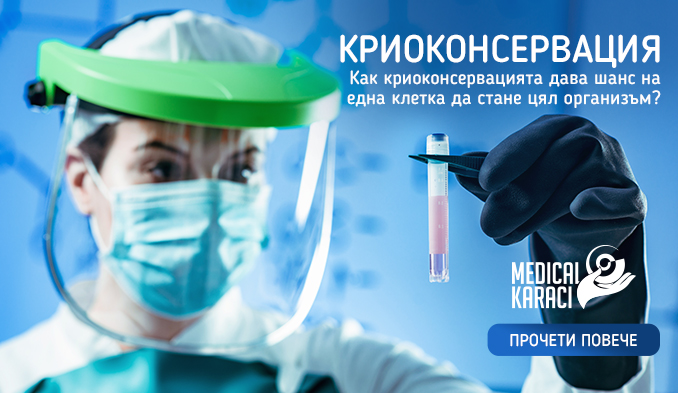Let's first clarify the issue - what is cryopreservation?
Cryopreservation is a way of preserving and storing tissues and cells for a long time by freezing.
The first case of cryopreservation known in the world dates back to 1776, when the Italian physicist Spallanzani, also called the "father of artificial insemination", tried to preserve the genetic information of sperm for a long time by cooling them in snow.
Further scientific progress was made much later with the discovery of the cryoprotective properties of glycerol. This advance was a turning point in the field of fertility preservation, through the preservation of reproductive cells and embryos.
When is it done?
This method is used in both women and men, with the most common indications being when:
- Woman wants to postpone motherhood by insuring herself with fit eggs
- There are signs of premature menopause
- Low embryonic response
- Multiple ovarian surgeries and reduced ovarian reserve
- The man will be absent during assisted reproduction
- There are deviations in the spermogram - cells are repeatedly frozen, which are collected and used when needed
- The man has Azoospermia, single cells are taken by TESE and TESA, followed by ICSI.
- When aggressive chemotherapy/radiotherapy is planned
How does this happen?
Cryopreservation uses the ability of certain small molecules to enter certain cells, preventing dehydration. At the same time, these molecules prevent the liquid medium in the cell from forming ice crystals, i.e., intracellular homeostasis is maintained during the freezing process and cell organelles are not destroyed and hence the cell does not age.
The most commonly used protectants are dimethyl sulfoxide (DMSO) molecules and glycerol.
In this conventional slow freezing technique, unwanted ice crystals are sometimes formed, disturbing the internal environment of the cell. The transfer success of the frozen cell is about 70%.
Is there a newer and more successful way?
CRIOTOP is one of the techniques for rapid freezing (vitrification) of cells. It is mostly used in assisted reproduction to freeze eggs.
The eggs are frozen for 2 to 6 hours after the follicular puncture. Very high concentrations of cryoprotectants (DMSO and ethylene glycol) are used to lower the temperature at such a rapid rate that the water in the cell cannot turn to ice crystal. After treating the cell with the cryoprotectants, only a thin layer of the vitrification medium is left.
The cryotope (the "sealed" cell) is placed in an environment of liquid nitrogen and continuous vertical movement. This ensures a maximum cooling rate (about 23 000 °C per minute).
Finally, under the liquid nitrogen, a cap is placed on the cryotope to protect it from mechanical damage during transport and storage.
The priority of this method is not only the freezing technique, but also the percentage survival of embryos after thawing. Here the percentage reaches 95%.
Sperm, stem and blood cells are stored with very good success, and it is the opinion of scientists that sperm cells are preserved with priority over other cells due to their low water content.For more information, we at Medical Karaj are at your service.
Call us on the following numbers "Medical Karaj": 0879 977 401 or 0879 977 402.
Also keep an eye on our constantly updated Facebook content.



